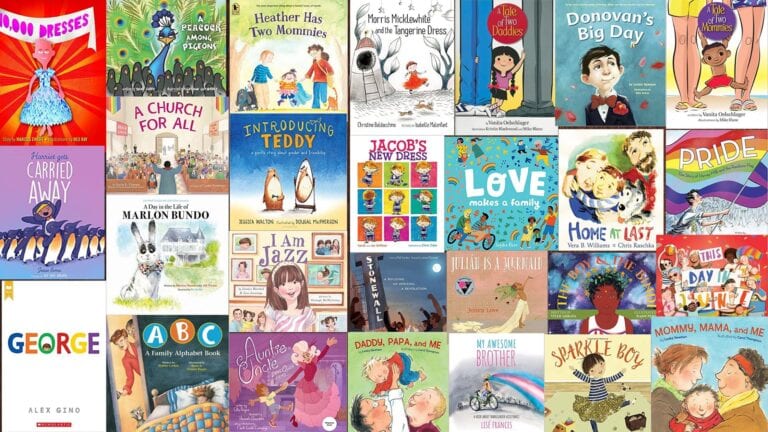What is the Best App to Learn Spanish for Kids?

How to Teach Spanish to Kids: The 5 Best Apps to Learn Spanish at Home
Learning a new language can be a rewarding journey, and when it comes to teaching Spanish to kids, the key is to make it fun, interactive, and engaging. In this blog post, we’ll explore the science of second language acquisition and provide insights into the best approaches to teaching Spanish to children at home. We’ll also introduce you to one of the most innovative language-learning apps for kids, FabuLingua. Before we begin, please take a moment to pin this post to your homeschool board.
*Disclaimer, this post is sponsored by Fabulingua, I was compensated for my time, all opinions are 100% my own honest opinions and I wasn’t required to post a positive review. You can read my full disclosure here. This post does contain affiliate links which means if you make a purchase I will receive a commission with no extra cost to you, thank you for your support. *
Understanding the Basics of Second Language Acquisition
Before diving into the world of language-learning apps, it’s crucial to understand the science of second language acquisition. Traditional language learning, focused on grammar and vocabulary memorization, might help with tests but often falls short regarding real communication. So, what does the science say?
Language Acquisition vs Language Learning
Language acquisition is the process of becoming fluent in a language, enabling seamless communication. Language learning, on the other hand, often revolves around memorization and structured lessons. To communicate effectively, acquiring the language is essential; the key is comprehensible input.
Comprehensible input
Comprehensible input means understanding the message, not just the words. Kids need exposure to Spanish they can understand from context clues, not complex grammar lessons.
Avoid Stress or Boredom
Learning a new language should be enjoyable for kids. Stress and boredom can hinder the learning process. Making the language learning experience fun, compelling, and interactive is essential to truly engage children.
Make it Story-Based
Stories are powerful tools for vocabulary development. Just as reading enhances vocabulary in one’s native language, it’s equally effective for learning Spanish. Incorporating stories into language learning can make the process more enjoyable and effective.
Respect the Silent Period
Don’t rush the learning process. Just like children have a silent period when learning their first language, they need time to absorb a new language. Avoid overwhelming them with questions or expectations too early in the learning journey.
Don’t Focus on Grammar in the First Few Years
Grammar is essential but should come after a solid foundation of comprehensible input. Think of it as the icing on the cake. First, you need the cake, which is the language’s foundation built through exposure to comprehensible input.
How to Teach Spanish to Kids at Home
Now that we’ve established the principles of effective language acquisition, let’s dive into practical tips for teaching Spanish to your children at home.
Establish a Daily Routine for Language Learning
Consistency is key. Set a daily routine for language learning to create a structured environment that encourages practice and development.
Read Spanish Stories Together
Reading is a powerful tool for expanding vocabulary and improving language skills. Reading Spanish stories together can be an enjoyable bonding experience while fostering language development. Reading aloud helps develop vocabulary and listening comprehension. Use engaging, illustrative books.
Provide Native Speaker Exposure
Exposure to native speakers is invaluable. Interaction with native Spanish speakers or incorporate media, like Spanish-language cartoons or music, into your child’s routine.
Leverage Screen time
In today’s digital age, technology can be a valuable educational tool. Incorporate language-learning apps into your child’s screen time routine to make learning interactive and engaging.
The 5 Best Spanish Apps for Kids
Let’s introduce you to the top five Spanish language-learning apps for kids. Among these, FabuLingua stands out as a unique and highly effective option.
FabuLingua
FabuLingua is not just an app; it’s a language-learning mobile game designed for children aged 2-10. This app combines the latest advancements in the science of second language acquisition with interactive storytelling and gameplay to teach kids Spanish in a fun and engaging way.
FabuLingua’s interactive stories are set in a captivating mobile game, making language acquisition feel like a game rather than a lesson. The app engages children on multiple sensory levels, allowing them to see, read, listen, and speak in Spanish.
What sets FabuLingua apart is its use of comprehensible input, a crucial element in language acquisition. Comprehensible input ensures that children can understand and enjoy the content they’re exposed to, which is key to effective language learning.
On FabuLingua Island, your child becomes an explorer, progressing through stories and levels to unlock new locations and meet exciting characters. They’ll collect treasures, play card battles, and customize their avatars, all while learning Spanish naturally and seamlessly.
FabuLingua’s approach is not just about fun and games; it’s grounded in a patented methodology based on modern language learning science. It’s a comprehensive package that offers both entertainment and educational value.
With an annual subscription priced at $69.99, which provides access to six profiles, FabuLingua offers incredible value for parents who want to give their children the gift of language learning. If you’re looking for the best app to teach your child Spanish, FabuLingua is a top contender. Use the code BLOOM1MONTHFREE to get 1 free month.
Unlock the Magic of Language Learning: FabuLingua for Kids
You can find more video tutorials on our Youtube Channel
Duolingo
Duolingo is one of the most well-known language-learning apps, and it’s suitable for learners of all ages, including children. It offers a structured and comprehensive approach to teaching Spanish, making it a popular choice for parents looking to introduce their kids to a new language.
Features:
- Interactive Lessons: Duolingo offers various interactive lessons and exercises, making language learning engaging.
- Progress Tracking: Parents can monitor their child’s progress and performance through the app.
- Gamification: The app includes a gamified approach with rewards, making learning fun.
- Community: Duolingo has a solid and active language-learning community.
Pros:
- Available in many languages, including Spanish.
- Offers a gamified approach that can be appealing to kids.
- Provides comprehensive language lessons and covers a wide range of topics.
Cons:
- Young children may have a steeper learning curve than dedicated kids’ apps.
- While it offers comprehensible input, it may lack the immersive storytelling elements found in FabuLingua.
Duolingo is a versatile language-learning app suitable for various age groups, and it’s an excellent option for parents looking for a comprehensive language-learning tool for their children. However, FabuLingua stands out with its immersive storytelling approach and focus on making language acquisition feel like a game.
In conclusion, when it comes to teaching Spanish to kids, it’s essential to make the process enjoyable, engaging, and based on the science of language acquisition. FabuLingua, with its innovative approach, combines education with fun, making it one of the best Spanish language-learning apps for kids available today. Make language learning an adventure for your child with FabuLingua, and watch them become fluent in Spanish while having a blast!
Gus on the Go
Gus on the Go is a language-learning app designed for children to learn Spanish through interactive and engaging lessons. It features a variety of vocabulary and grammar exercises, all centered around a cute character named Gus.
Features:
- Interactive Lessons: Gus on the Go offers a wide range of interactive lessons, games, and quizzes.
- Audio Pronunciation: Children can listen to native speaker pronunciations for correct language acquisition.
- Multiple Languages: The app covers multiple languages, making it suitable for multilingual households.
Pros:
- Offers engaging activities that make learning Spanish enjoyable for kids.
- Provides a solid foundation in vocabulary and pronunciation.
Cons:
- May lack the depth of storytelling found in FabuLingua.
- Limited in terms of comprehensive input and immersive experiences.
Rosetta Stone
Rosetta Stone is a renowned language-learning platform offering a comprehensive approach to teaching Spanish and other languages. It is suitable for children and adults, making it a versatile choice for families interested in language education.
Features:
- Structured Lessons: Rosetta Stone provides structured language lessons that gradually build skills and vocabulary.
- Pronunciation Guidance: The app emphasizes correct pronunciation with the help of native speaker recordings.
- Interactive Exercises: Interactive exercises, games, and quizzes make learning engaging.
Pros:
- A well-established language-learning platform with a long history of success.
- Offers a structured and comprehensive approach to language acquisition.
- Suitable for children and adults looking for an in-depth learning experience.
Cons:
- May have a steeper learning curve for younger children.
- While it offers comprehensive input, it may not have the same storytelling elements as FabuLingua.
Rosetta Stone is a solid choice for parents looking for a comprehensive and reputable language-learning solution for their children. It provides a structured path to language proficiency and emphasizes correct pronunciation.
Babbel
Babbel is a language-learning app designed to help users develop practical language skills for real-life conversations. It offers a range of languages, including Spanish, and can be suitable for both adults and children.
Features:
- Conversational Focus: Babbel strongly emphasizes teaching language skills for everyday conversations.
- Interactive Lessons: Interactive exercises and lessons are designed to be engaging.
- Progress Tracking: The app enables users to track their progress and review previous lessons.
Pros:
- Suitable for families looking for practical language skills for communication.
- Offers a range of languages beyond Spanish.
- Provides a focus on real-life conversations and vocabulary.
Cons:
- May have a more adult-oriented approach, which could be less engaging for younger children.
- While it offers practical input, it may not have the same storytelling and game elements as FabuLingua.
Babbel is a valuable option for families who want to focus on real-life communication skills in Spanish. It is designed to help learners become conversationally proficient, although it may be better suited for older children or teenagers. However, if you’re looking for a more immersive and story-based approach, FabuLingua could be a better choice.
Learning a new language opens up incredible opportunities for kids as they grow. With the right methods and tools, Spanish can become a part of their world in a natural, enjoyable way. The best apps combine comprehensible input, engaging narratives, and interactive play for language acquisition that sticks. ¿Qué esperas? ¡Vámonos!







